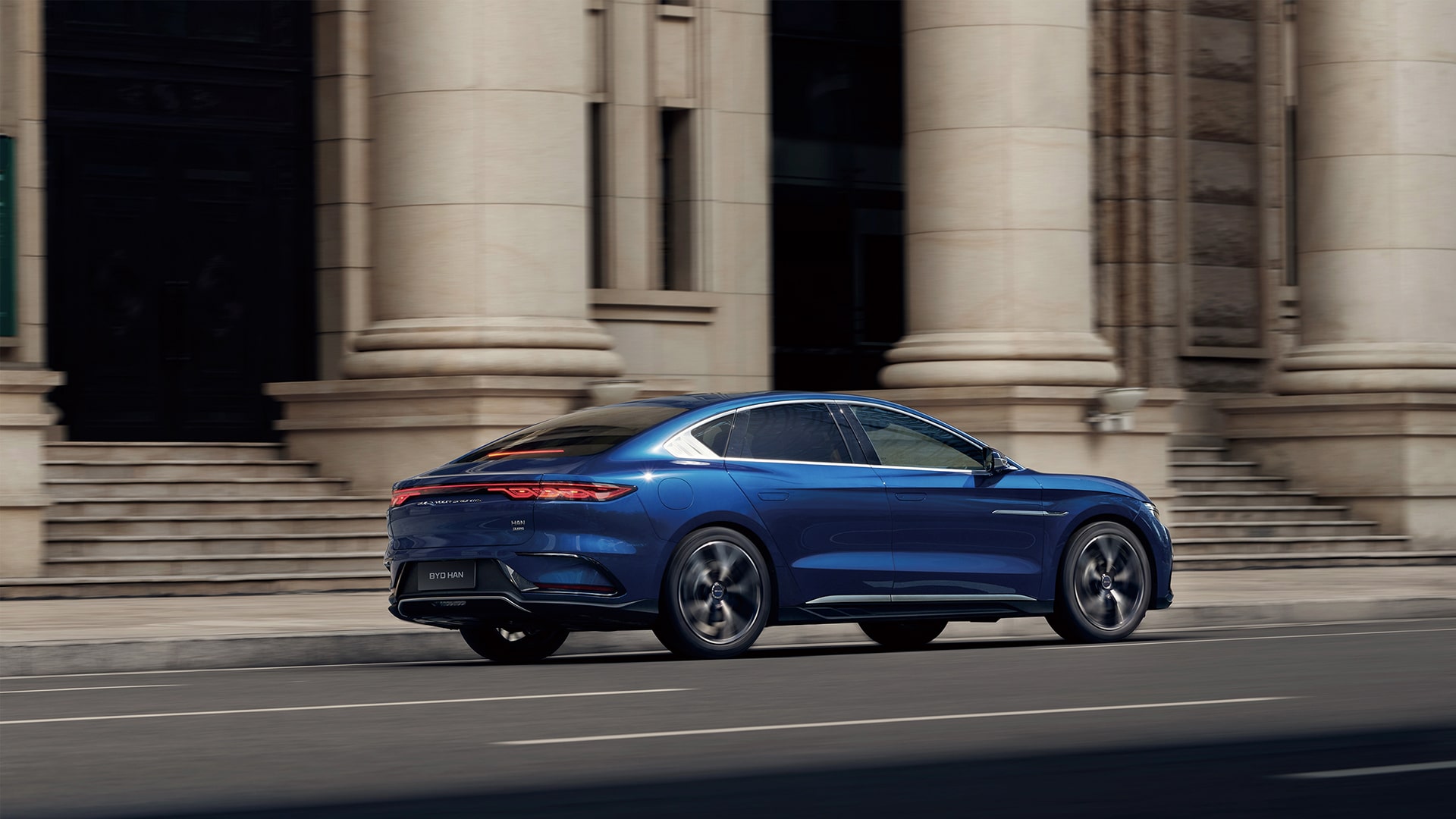BYD and legacy automakers take the wheel in smart driving’s next chapter
2 days ago
“Our production scale this year may grow fourfold,” a senior executive at a leading smart driving company told 36Kr.
The rapid growth of the smart driving industry is now closely tied to increasing demand from automakers. Unlike previous years, when newer players like Huawei, Xpeng Motors, Li Auto, Nio, Xiaomi, and Zeekr drove innovation, legacy automakers such as BYD are now taking the lead.
Starting in 2025, some BYD models will debut the company’s proprietary advanced smart driving systems, featuring highway and urban navigation capabilities, according to 36Kr. BYD’s approximately 1,300-member smart driving R&D team is working at full speed to ensure delivery. “BYD’s critical mission now is to democratize smart driving while successfully implementing proprietary algorithms,” a source familiar with the matter said.
BYD’s advanced smart driving project, launched in September 2024, is nearing completion. This new system is designed to be widely available in low- and mid-range models that previously lacked advanced capabilities. In an August 2024 interview with 36Kr, Yang Dongsheng, head of BYD’s new technology institute, emphasized the company’s vision, stating that even vehicles priced under RMB 100,000 (USD 14,000) should have advanced smart driving features.
BYD’s rapid progress has taken the industry by surprise. If the company succeeds in delivering its proprietary system in the first half of 2025, it will be a major disruption. Many competitors, including suppliers, are still years away from rolling out similar features. For instance, highway navigate-on-autopilot (NOA) systems for vehicles priced between RMB 100,000–150,000 (USD 14,000–21,000) are expected to hit the market no earlier than 2026.
In 2024, a price war dominated the automotive sector, but the focus has now shifted to configurations. BYD is pushing the envelope by advocating the use of advanced hardware, such as seven or 11 cameras, even in its RMB 100,000-level models. Data from the 390th batch of new vehicle announcements by China’s Ministry of Industry and Information Technology shows nearly 20 BYD models from its Dynasty and Ocean series equipped with trinocular vision systems and other advanced features.
Industry forecasts project BYD will sell 5.5 million vehicles in 2025. If BYD and other automakers successfully deliver their smart driving systems, the sector could witness its largest rollout of advanced smart driving technologies yet, with millions of vehicles equipped. This volume would nearly rival the combined delivery figures of players like Li Auto, Nio, Xpeng, and Huawei’s smart driving division.
Sources indicate BYD is preparing extensively for this milestone, including developing data closed-loop systems and robust after-sales support.
Legacy automakers take the leadOver the past year, BYD’s smart driving team has undergone multiple restructurings and intensified its self-development efforts, marking a shift in the company’s technological approach. Public records show that BYD’s smart driving solutions are organized into three tiers: DiPilot 100, DiPilot 300, and DiPilot 600, with computing power ranging from under 100 TOPS to 500 TOPS.
DiPilot 100 focuses primarily on highway NOA features and represents the core of BYD’s current development initiatives. DiPilot 300 and 600 systems, designed for urban NOA capabilities, utilize one or two of Nvidia’s Orin X chips, respectively. These systems also differ in the number of light detection and ranging (LiDAR) sensors they incorporate, with platforms like the Denza N7 and Yangwang U8 equipped with two and three sensors, respectively.
Other legacy automakers, such as Great Wall Motor (GWM), Geely, Chang’an Automobile, and Chery, are pursuing similar advancements in smart driving technologies.
Legacy automakers are placing significant bets on smart driving technologies for 2025. However, most remain in the foundational stages, with a focus on highway NOA rather than novel, end-to-end (E2E) driving technologies.
Proprietary smart driving tech: Opportunity or pitfall?What sparked the sudden surge in interest from legacy automakers? For one, the commercial potential is becoming undeniable.
In 2024, Huawei’s vehicle business unit generated nearly RMB 10 billion (USD 1.4 billion) in just six months, while Li Auto reported a penetration rate exceeding 50% for its smart driving-equipped models. These milestones underscore the growing profitability of smart driving technologies.
For legacy automakers entering the field, the choice boils down to either prioritize self-development or rely on third-party suppliers.
Adopting solutions from smart driving suppliers offers immediate results. For instance, BYD’s Denza N7 utilizes DeepRoute.ai’s E2E system, while the Fangchengbao 8 integrates Huawei’s ADS 3.0 smart driving system. Similarly, GWM’s Wey Lanshan employs solutions from DeepRoute.ai. This approach has allowed these brands to catch up with industry leaders.
In 2024, most models equipped with urban NOA features were priced above RMB 200,000 (USD 28,000). A senior executive at a leading smart driving company predicts that urban NOA systems will become standard in vehicles priced at RMB 150,000 (USD 21,000) by 2025 and will reach the RMB 100,000 (USD 14,000) range by 2026.
Highway NOA, meanwhile, is expected to become widely available in cars priced around RMB 100,000 by 2025. As smart driving technologies become increasingly mainstream, legacy automakers face the challenge of balancing cost efficiency with production speed.
Smart driving suppliers have reportedly reduced the adaptation time for new vehicle models to just three to six months, enabling automakers to quickly roll out highway NOA capabilities if they opt for external solutions.
For legacy automakers, however, the decision to pursue in-house development ultimately hinges on scale and cost. Third-party smart driving solutions often require significant upfront investments, with platform development fees reaching tens of millions of RMB, in addition to licensing fees per vehicle. For example, automakers typically pay approximately RMB 1,000 (USD 140) per unit for highway NOA software licenses.
For automakers producing millions of vehicles annually, these costs accumulate rapidly. Licensing fees for 10,000 vehicles can reach tens of millions of RMB, while 100,000 vehicles require payments exceeding RMB 100 million (USD 14 million). In contrast, developing a proprietary highway NOA system may prove more cost-effective over time.
Industry insiders point out that after years of development, highway NOA systems have become relatively standardized and mature, with only minor performance differences between first- and second-tier solutions. This maturity makes self-development a more viable option for automakers. For example, BYD’s highway NOA project, launched in September 2024, is already nearing completion.
Furthermore, as the lines blur between automotive technology, artificial intelligence, and embodied intelligence, automakers are increasingly drawn to the idea of owning core technologies. Smart driving systems are inherently tied to AI, big data, and computing power, making in-house development an attractive and strategic imperative.
Despite the benefits, self-development is not without its challenges. Many legacy automakers remain focused on developing highway NOA or lightweight urban NOA systems using conventional rule-based frameworks. In contrast, newer paradigms such as end-to-end (E2E) systems represent a significant leap in technology. This frontier remains challenging for legacy automakers to navigate.
BYD is reportedly exploring E2E smart driving systems but is not expected to roll them out until 2026. Whether legacy automakers can catch up will depend largely on the pace of industry advancements. If E2E systems stabilize within the next two years, traditional players may close the gap. However, if E2E systems evolve rapidly alongside advancements in AI and robotics, legacy automakers will need to accelerate their efforts significantly to stay competitive.
Automakers can achieve results through self-development, but the deeper they venture, the more challenging and resource-intensive it becomes to sustain progress. Moreover, if self-developed solutions fall short of industry standards, they risk hindering sales efforts instead of boosting them. In such cases, some automakers may grow disillusioned and ultimately abandon in-house development altogether.
KrASIA Connection features translated and adapted content that was originally published by 36Kr. This article was written by Li Anqi for 36Kr.
...Read the fullstory
It's better on the More. News app
✅ It’s fast
✅ It’s easy to use
✅ It’s free









